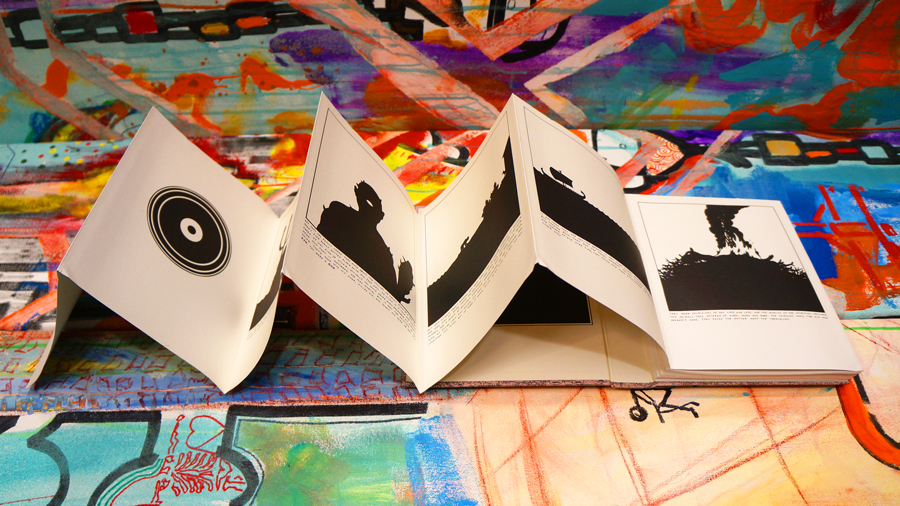So you’re a Greek god, or the Christian God, or what-have-you, and you’re trying to cope with the harsh realities of modern life, what Henry Thoreau called that “quiet desperation” of day-to-day existence, along with those big issues like (what is) life and (what is) death that seem to surround us all the freaking time. Enter, thus, into the world of shadow, silhouette, and dark humour that is Anders Nilsen’s book, Rage of Poseidon, where each chapter incites us to take on the personas of the gods, in all their twisted glory, as they simultaneously assimilate us, in one long quest for life’s meaning. Throughout the quest, human and god alike fall victim to anguish, insecurity, and existentialism, along with, ultimately, a vestige of hope.
Nilsen’s modern interpretation of our supposed classical heritage, along with the good ol’ Christian Bible, is nothing new. The gods have been making casual appearances in Western literature and art for centuries since, well, the printing press. Who does Dante meet in the eighth circle of Hell but Ulysses, that great Classical hero who sojourned oceans upon oceans and corrupt lands to return home, only to wind up in Hell? Who does Dante meet in the outermost sphere of Hell but Lucifer and Judas, and Brutus, et cetera, et cetera? Not to mention Dante’s well-versed tour guide, the Roman poet Virgil.
After Dante, there was Milton, raving on about Adam and Eve and Paradise. Then, a bit later, with the blossoming of mass media, there was Percy Jackson and The Passion of the Christ. Classical and Christian figures have been providing fodder for Western art and pop culture longer than the Greco-Roman world even existed. It seems more apt to say that we can’t escape Classical or Christian references, rather than that we’ve ever forgotten them.
The book is assembled with a precise attention to detail, from the crispness of the graphics to the pithiness of the copyright page.
What’s new in Poseidon is Nilsen’s fusion and critique, along with the book’s innovative format. Nilsen’s book folds out like an accordion, most likely because the book was first shown in a gallery as a series of panels before it was ever printed. The book is assembled with a precise attention to detail, from the crispness of the graphics to the pithiness of the copyright page. Even the paper quality is superior to the average office print-outs. The only problem, perhaps, is function: don’t fold out the pages too much, or they won’t want to fit back in.
The novelty of the format aptly introduces the irreverence of Nilsen’s work, which is a kind of fan fiction about Western heritage. Specifically, Nilsen chooses three stories about Greek gods, two about Christian figures, and two, paradoxically, that star everybody, with a healthy amount of conceptual inter-pollination in all seven. Athena, Greek goddess of wisdom, is used as a Christ figure, and the Christian God is shown “curled up in a ball in his bed […] in his underwear and just one sock,” blurring the boundaries of weak and powerful, moral and downright indecent. Nilsen’s creation is at once admissive of a Western tradition and reflexive of that very tradition. For example, he renders the Judeo-Christian God, generally portrayed as a benevolent and all-powerful being, as needy, sometimes careless, and maybe a little insane. Nilsen’s God is the image of the humans he created, instead of the other way around.
Nilsen’s creation is at once admissive of a Western tradition and reflexive of that very tradition.
Nilsen asks readers to alter their perspectives and put themselves in the place of the gods. Supposedly, they could answer our prayers if they wanted to, but are they really listening? Would you really care about you, if it weren’t kind of necessary? Nilsen assumes that gods are a universal (read: Western) form of identification, and he uses that commonality to show us the violence and tenderness of his philosophy on life and the grief that seems inherent to our lives. In his deceptively humourous depictions of gods and of humanity, we lose our religion a little, perhaps, but not our faith. Because, really, what else is there?
